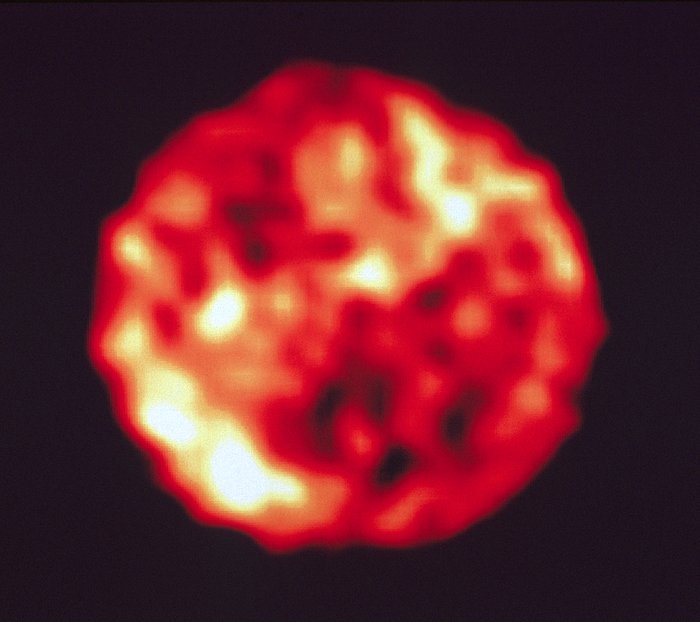NASA Hubble Space Telescope High Resolution Uv Image of Jupiter's Satellite Io
This is a Hubble Space Telescope image of the geologically active trailing hemisphere of the Jovian moon lo. Theultraviolet light image as taken with the European Space Agency's Faint Object Camera on March 15, 1992, whenlo was 414 million miles from Earth. No larger than Earth's moon, lo is so far away it is at the resolution limit ofground-based telescopes, so surface features cannot be distinguished. HST resolves features as small as 150 miles (about 240 kilometres) across. This level of detail is only surpassed by the Voyager probes which flew within several hundred thousand milesof lo in 1979. lo's surface looks remarkably different in ultraviolet light than it does in visible light. Regions which lookbright in visible light are dark in UV. The most likely explanation is that large areas of lo are covered with a sulfurdioxide frost. Because sulfur dioxide is a strong absorber of UV radiation, sulfur dioxide-rich areas are dark in the UVthough they are bright in visible light.
Technical Information:
lo north is 123 degrees and east 33 degrees counterclockwise from the top of the print. The diameter of the satelliteis 1 .l arc seconds equivalent to a diameter of 2170 miles. Resolution is 22 milliarcsec picture elements (pixels)corresponding to 43 miles per pixel on lo's surface.
Colours & filters
| Band | Telescope |
|---|---|
| Ultraviolet |
Hubble Space Telescope
FOC |
